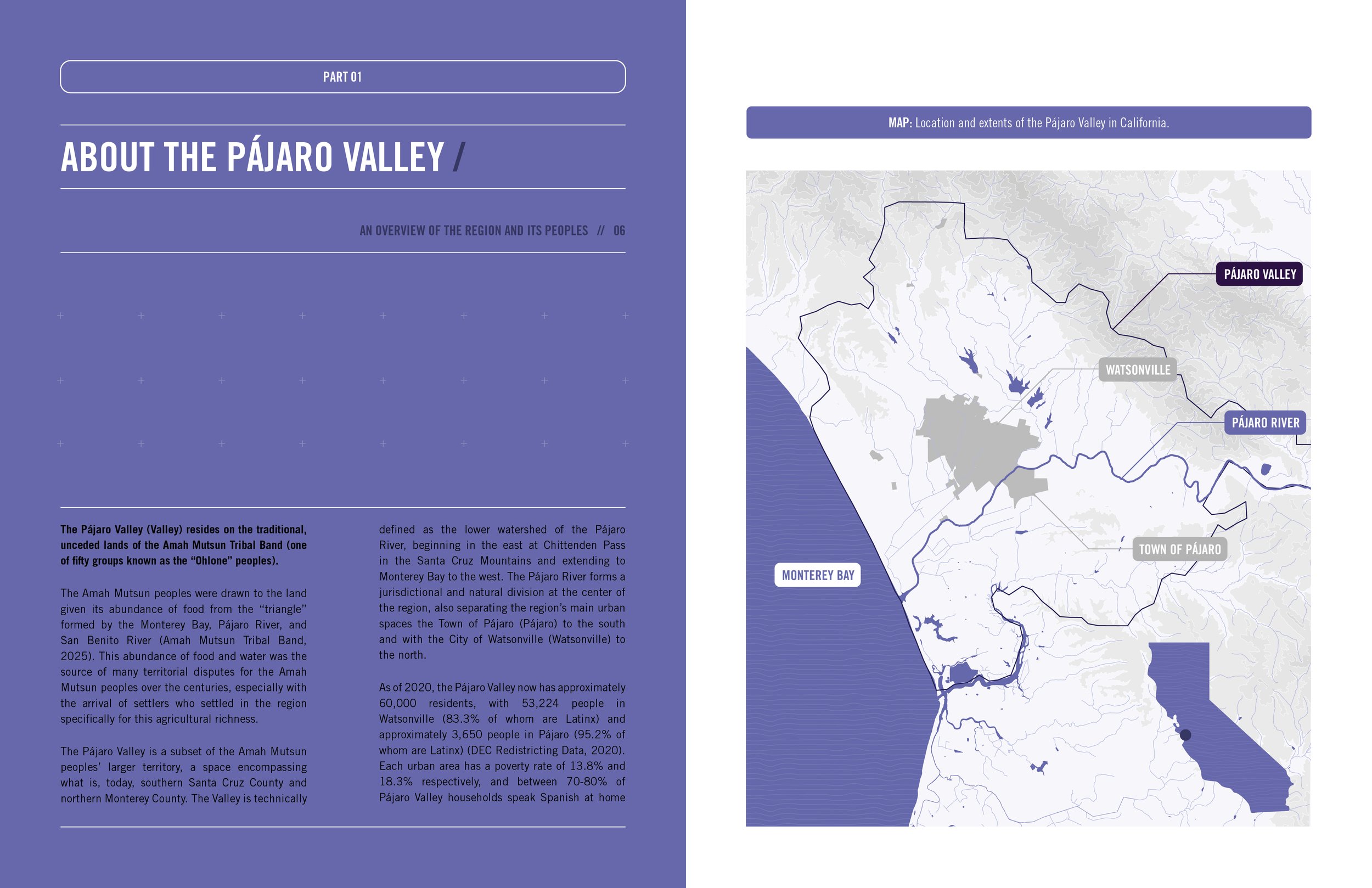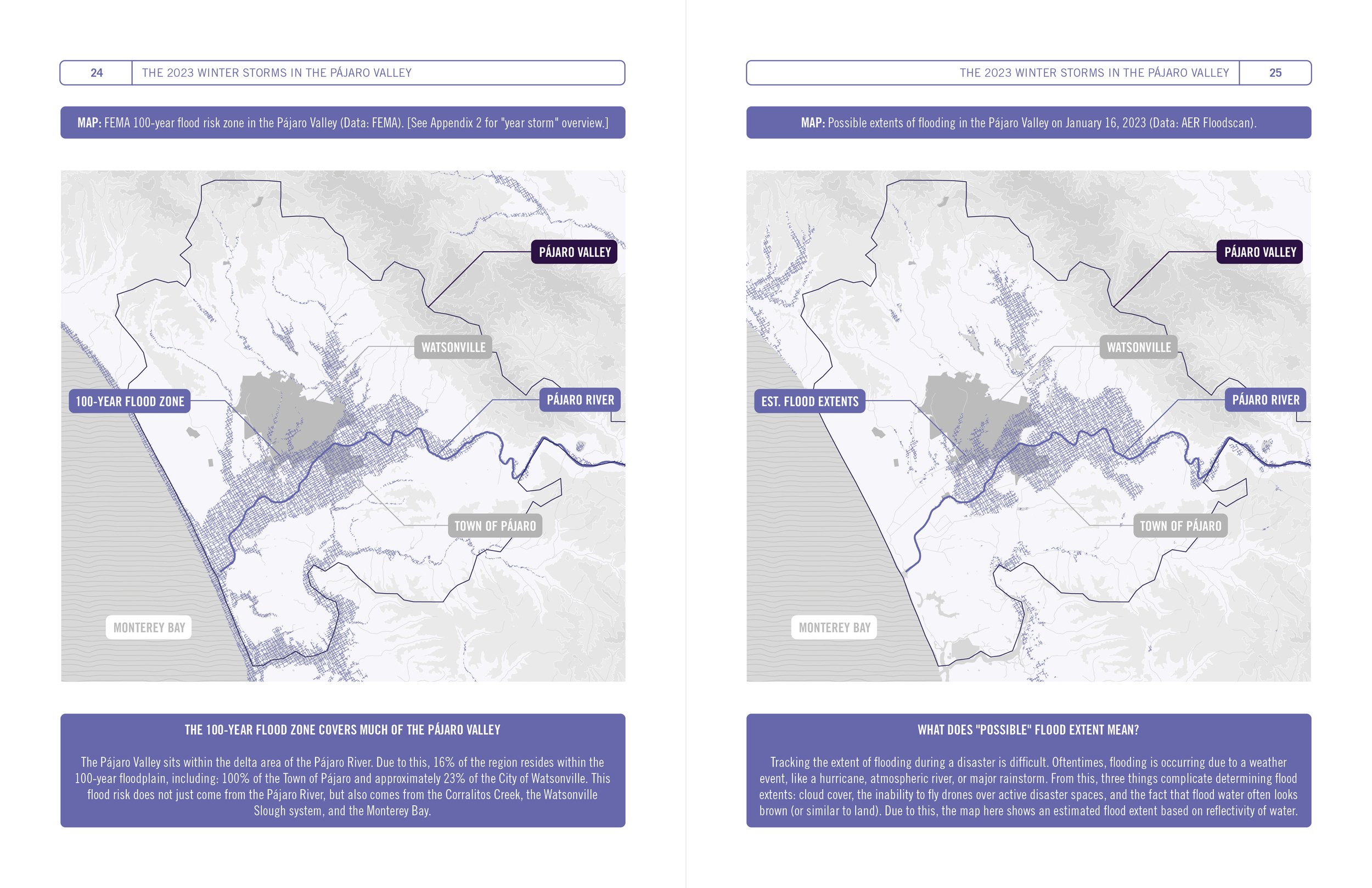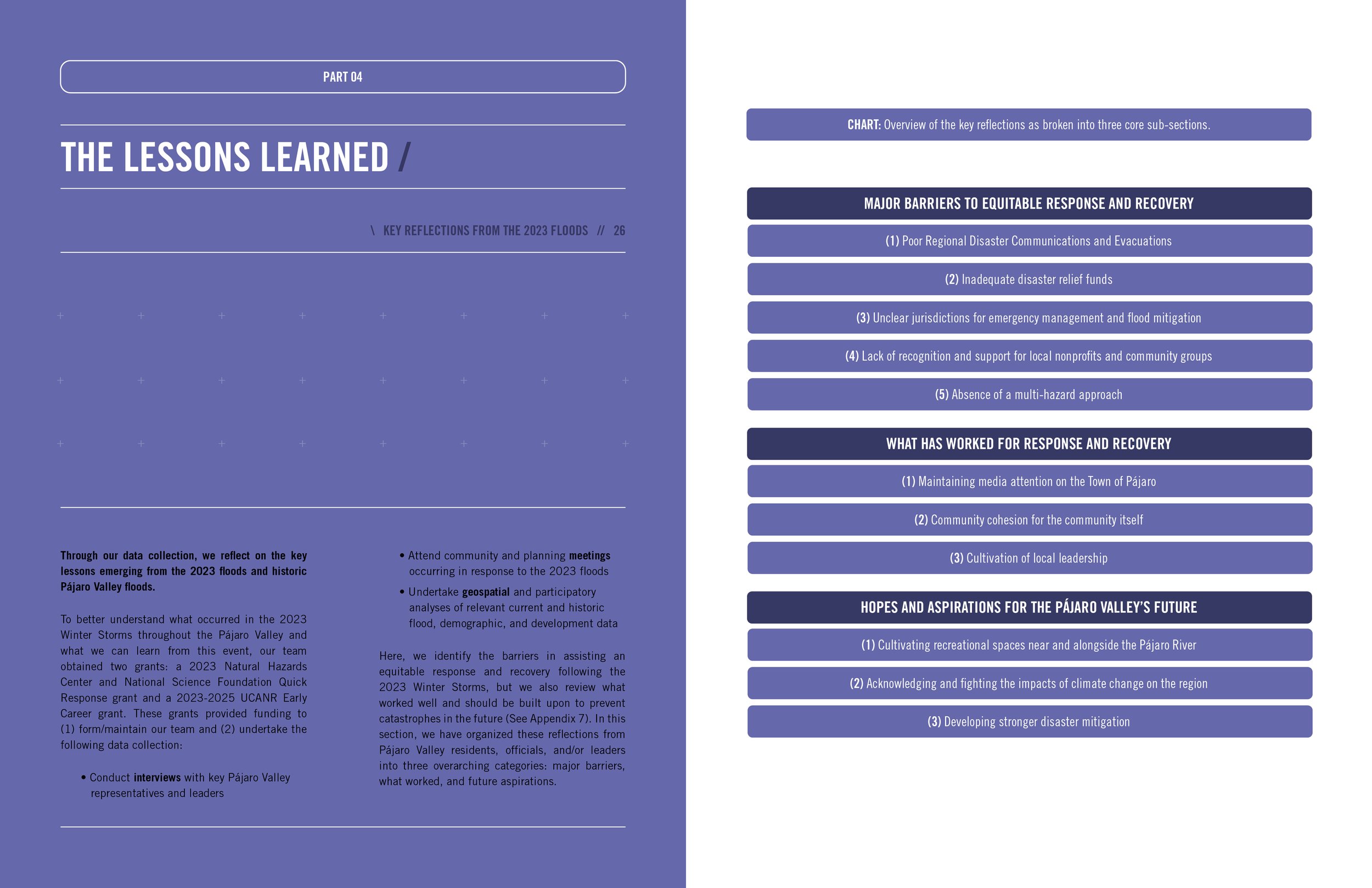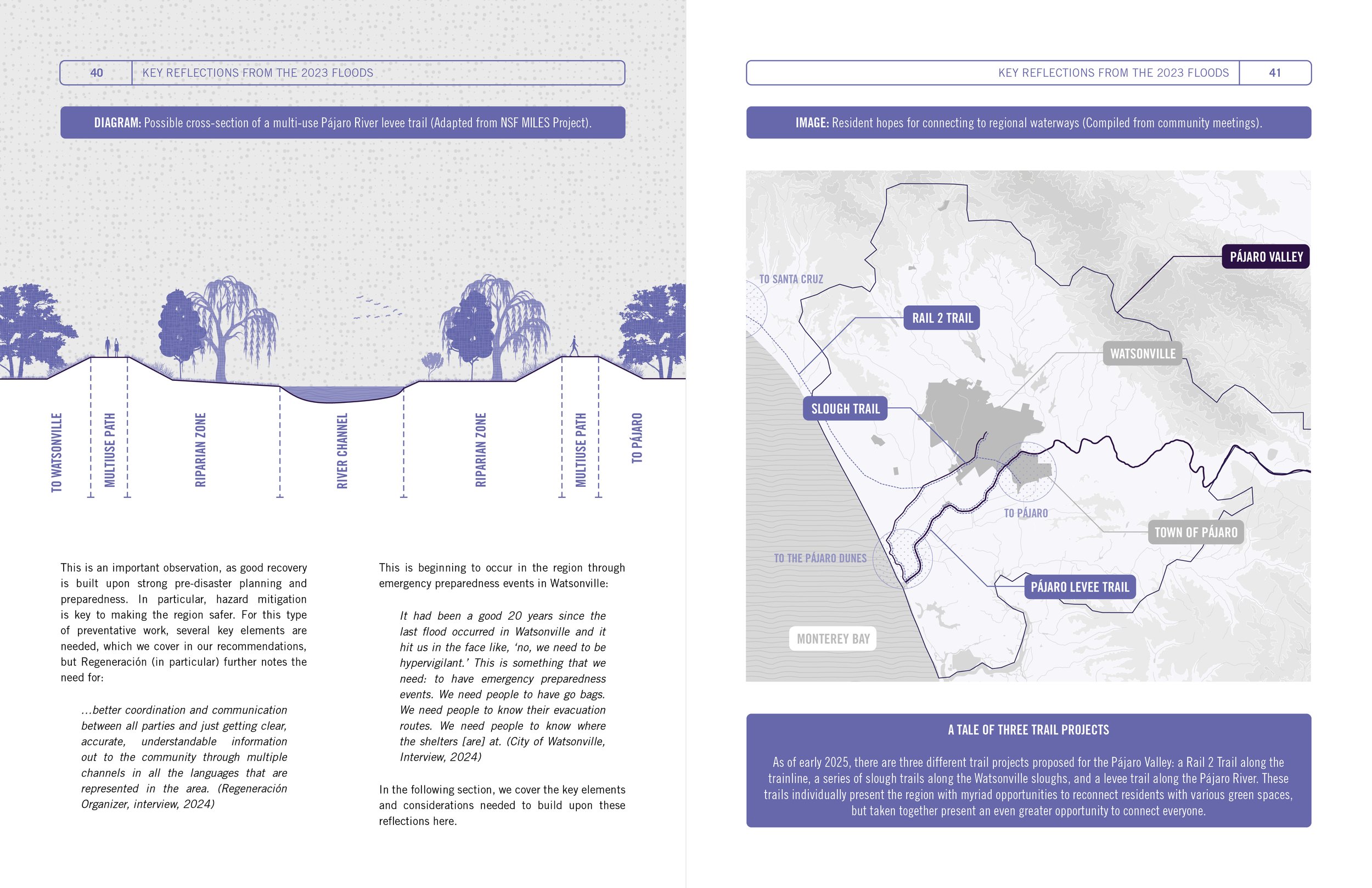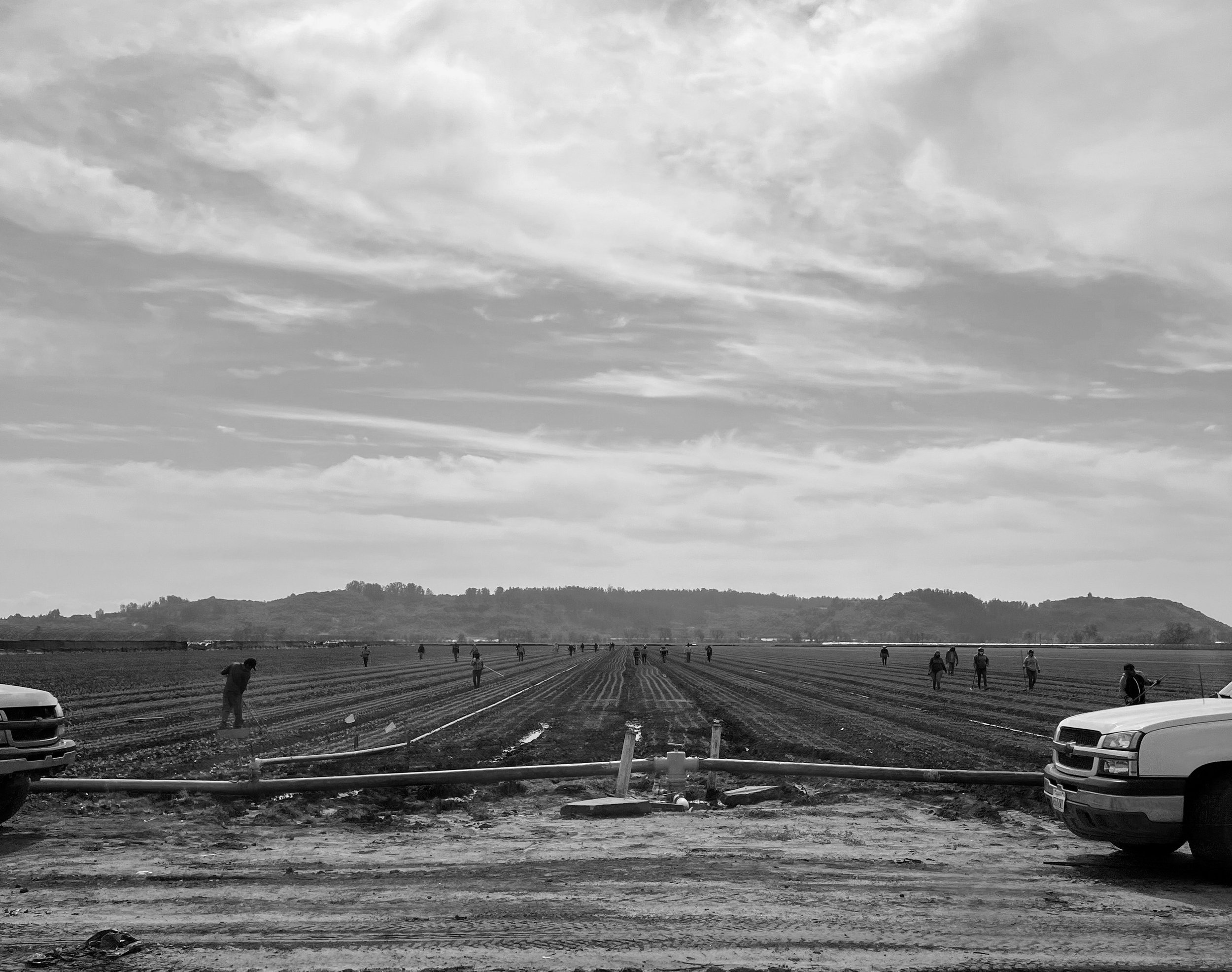
COMMUNITY REPORT
Equitable Recovery for the Pájaro Valley After the 2023 Winter Storms
Year(s)
2023-2025
Community
Pájaro Valley of California
Funding
Natural Hazards Center Quick Response Grant; UCANR Early Scholar Award
Read our Reports Here!
Download the Full Report Here [PDF/SPREADS]
Read our Quick Response Report for the Natural Hazards Center
Executive Summary
This report investigates the (in)equitableness of recovery outcomes following the 2023 Winter Storms in the Pájaro Valley of California (Valley).
The Winter Storms impacted central coastal California between December 2022 and March 2023, as a series of severe rainstorms which caused persistent and widespread flooding. The Pájaro Valley, a region encompassing southern Santa Cruz County and northern Monterey County, sat squarely in the paths of these storms, resulting in severe flooding and levee breaches along the region’s Pájaro River. Given its agriculture-based economy, majority Latine-population, and low population density, it was anticipated that the Valley would experience unique challenges in its post-flood recovery process. This report sought to uncover these challenges but also emphasize the power of community networks and capacity, as local characteristics to support and build upon. As such, the report asked two questions:
What post-flood recovery challenges were/are experienced by Pájaro Valley residents?
What can be done to mitigate future flood risks to make the community safer?
To answer these questions, the research team followed the Valley’s recovery process in the 24 months after the storms and levee breaches. During this time, the team attended and listened to community experiences within local meetings and interviewed key community leaders and government officials. Based upon this data collection (and first-hand experiences), three goals emerged as critical aspects determining the (in)equitableness of the recovery process:
To determine the distribution and severity of flooding in the region’s unincorporated areas;
To identify major barriers to equitable recovery in unincorporated areas; and
To amplify opportunities for positive changes and residents’ hopes for the future of the Pájaro Valley.
In discussing the distribution and severity of the flooding, we found parallels to the region’s 1995 floods: in terms of both scope and in terms of impacted neighborhoods. In particular, the “unincorporated” areas of the region (like the Town of Pájaro) faced more barriers in flood mitigation and recovery. Additionally, we cover five major barriers to the region’s flood recovery:
Poor regional disaster communications and evacuations
Inadequate disaster relief funds
Unclear jurisdictions for emergency management and flood mitigation
Lack of recognition and support for local nonprofits and community groups
Absence of a multi-hazard approach
Lastly, in seeking to also identify what worked successfully for the community, we outline both helpful recovery strategies and resident hopes moving forward. In terms of positive recovery practices to replicate/strengthen in the future, we identify three: (1) maintaining media attention on the Town of Pájaro, (2) community cohesion for the community itself; and (3) the cultivation of local leadership. Finally, we outline three hopes for the future of the Valley, as frequently communicated by residents: (1) cultivating recreational spaces along the Pájaro River, (2) acknowledging and fighting climate change impacts in the region, and (3) developing stronger regional disaster mitigation plans.
From these three focus areas, we make three recommendations, with relevant case studies, to help focus and direct the community’s efforts. Our hope is to help Pájaro Valley residents maintain momentum towards flood mitigation, in the hopes of making the Valley and safer and healthier community.
